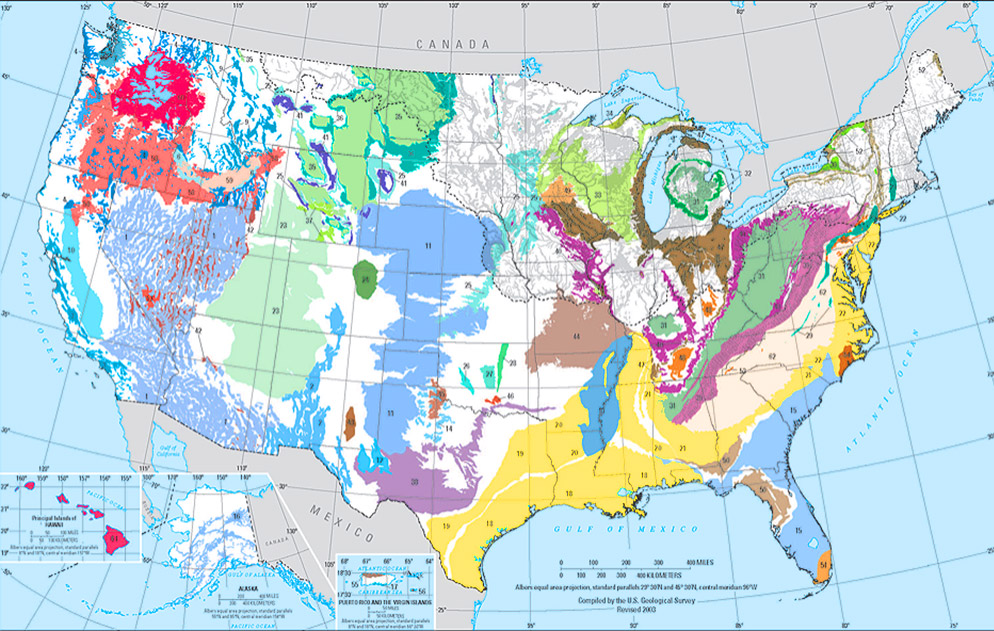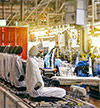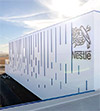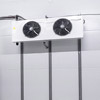In the West, where entire cities are rethinking growth amid worsening water scarcity, Greeley, Colorado, has quietly built a water system designed not just to endure—but to win. While other communities debate pipelines from the ocean or scramble to impose emergency conservation mandates, Greeley is banking excess water underground. Literally.
This midsize city—currently home to about 116,000 residents—is planning for a future that includes 450,000 people, dozens of major employers, and a volatile climate. And it’s doing so with a bold strategy most cities haven’t even considered: aquifer storage and recovery.
Built to Withstand Politics and Drought
Greeley’s water strategy isn’t just about infrastructure—it’s about governance. In 1958, the city charter established an appointed Water and Sewer Board with the authority to plan, invest, and act independently of election cycles. That structure has allowed the city to maintain continuity and follow through on decades-long water planning strategies without political interference.
“Water projects take decades,” said Sean Chambers, Greeley’s Director of Water and Sewer. “You need continuity of leadership and commitment. Our water board gives us that—and it’s a huge advantage.”
Backed by that stability, the city has steadily acquired water rights across four different watersheds and built out a diverse supply portfolio that includes two treatment plants, high-mountain reservoirs, and gravel pit storage along the South Platte River. But its most forward-looking investment lies deep underground.
The Power of Going Underground
Faced with the prospect of building a massive $700 million surface reservoir, Greeley instead pursued something few communities have dared to try: aquifer storage and recovery. The Terry Ranch Project, located in Weld County, taps into a vast underground aquifer capable of storing up to 1.2 million acre-feet of water—more than seven times the volume of the nearby Horsetooth Reservoir.
Greeley’s water strategy isn’t just about infrastructure—it’s about governance.
In wet years, Greeley can inject treated water into the aquifer. In dry years, it can draw it back out. Unlike surface reservoirs, which suffer from evaporation and are subject to heavy environmental permitting, aquifer storage offers a low-impact, scalable solution.
“Water stored underground doesn’t evaporate—and you can build capacity as your city grows,” said Chambers. “Instead of betting everything on one massive dam, we can invest incrementally as demand increases.”
That scalability matters in more ways than one. It spreads capital costs over time, avoids debt-heavy infrastructure gambles, and helps the city maintain a balanced budget—something many fast-growing communities struggle to do.
Ready for Growth—and Ready to Compete
Greeley already serves some of the region’s largest water users, including Leprino Foods and JBS, two national food processing giants. But the city has also positioned itself to serve the next wave of large-scale water users—from advanced manufacturing and brewing to data centers and quantum technology.
Water stored underground doesn’t evaporate—and you can build capacity as your city grows.
“We constantly ask ourselves: Could we handle a 25% increase in daily water demand, nine months from now?” said Chambers. “The answer is yes—and that’s not something most cities can say.”
One key reason: Greeley’s water pricing structure. The city funds new water infrastructure through a unique credit system tied to the Terry Ranch aquifer. Developers purchase credits to meet raw water requirements, and those funds are reinvested in long-term supply. The result? Greeley now offers the most affordable raw water pricing on Colorado’s Front Range.
Unlike communities that try to attract new industry by giving water away, Greeley has built a model that’s sustainable—for both its water utility and its economy.
“If you’re giving away water, someone else is paying for it—and that someone is usually your existing residents,” said Chambers. “We think there’s a better way.”
Water as a Growth Strategy
Greeley’s investment in aquifer storage isn’t just about conservation—it’s about competitive positioning. In an era when companies are building internal teams just to analyze water access before siting new facilities, Greeley stands out as a place where those questions have already been answered.
With a secure, affordable water supply, Greeley is attracting attention not just for its innovation—but for what it offers next-generation industries: reliability.




